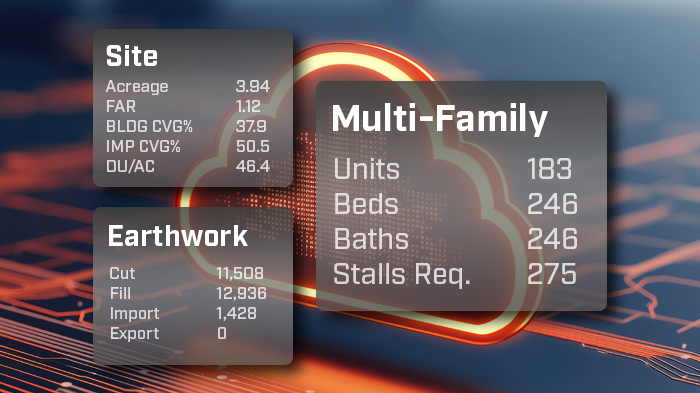
Only 1 out of 40 real estate deals become a real project, but most deals are never killed. Most just float around in the feasibility phase wasting everyone’s time.
Real estate feasibility processes are unprofitable, and strung out, but necessary for the survival of a lot of companies including development, architectural, general contracting, banking, engineering, investment, marketing, and brokerage firms.

There’s a lot at play here to make the real estate feasibility process more profitable and less time-consuming for everyone involved.

- To process more deals, we can build a larger pipeline (put more people on the job) or increase the speed of flow through process innovation. We need a better way to do site planning—one that’s faster with set parameters.
- To get to the most optimized deals, we have to evaluate more deal iterations. But instead of taking a long time to iterate, we need an exponentially quicker tool that can analyze spatial, quantity, and financial data all at once.
- To reduce time and communication lag, we have to eliminate the back-and-forth between each iteration or waiting weeks to make a tiny change. We need a single source of truth that all stakeholders can work with in real time.
Streamlining the Real Estate Feasibility Workflow

At TestFit, we’re providing a real estate feasibility platform that allows you to:
- Process more deals in hours, not weeks.
- Get to the right deal quickly and accurately with the right data.
- Get everyone on the same page in one single model.
Our AI configurators output rapid design iterations with parameters that each discipline in the deal team can input in real-time.

In this example above, the effect of an increased setback instantaneously affects all the quantity takeoff and financial metrics. Since the pro-forma is in sync with the designed building, a yield on cost is immediate in seconds, not weeks.
This is what a streamlined real estate feasibility workflow can look like:
- Developer provides a range of rents and unit mixes.
- Architect provides a range of building design parameters.
- General contractor provides a range of costs.
- TestFit automatically iterates design schemes based on all the parameters provide
All within the same platform.
All of the generated feasibility studies can be saved and compared with all the necessary data (like the image below), so the whole team can find the best-optimized deal and kill the deals that don’t work.Once the deal turns into a real project after the real estate feasibility phase, all the data and models can be exported into other platforms, such as AutoCAD, Revit, and Excel, to continue design development.

This new real estate feasibility workflow helps developers, architects, and contractors:
- save time on site planning,
- reduce risk of acquiring deals,
- and increase site potentials,
By optimizing the best design solutions for every site with real-time insights into design, constructability, and cost.
Over the long term, we hope to continue building TestFit as the main platform for this streamlined workflow and expanding into a cloud-based experience.
Want to see how TestFit is helping companies today? Read their stories.







